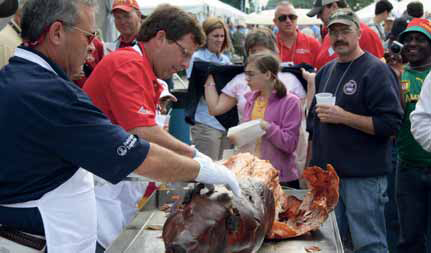World Pork Expo 2012: Valuing manure nutrients

Agriculture’s environmental impact is becoming a focal point for US consumers, governments, the public and the farmers. As pork producers look forward to the 2012 World Pork Expo, many are interested in the high demand for manure as a source of plant nutrients and organic material for crop farmers.
“The most common method of valuing fertiliser is component pricing,” says Kelvin Leibold, a farm management specialist with Iowa State University (ISU) Extension. “The manure is sampled and tested to determine the nutrient content. Then this analysis is used to determine the value, based on commercial fertiliser prices.”
Manure is recognised as an excellent source of plant nutrients, including nitrogen (N), phosphorus (P) and potassium (K). In addition, manure returns organic matter and other nutrients such as calcium, magnesium and sulphur to the soil, building soil fertility and quality.
Nitrogen is found in the organic (slow release) and inorganic (fast release) forms in
manure. However, the inorganic forms are susceptible to loss through ammonia volatilisation during storage and field application. Promptly incorporating the manure into the soil can reduce these N losses, according to ISU Extension, adding that P and K in manure are mostly present in the inorganic form. This means that P and K forms in manure are similar to commercial fertiliser, in that they are readily available for plant uptake.The nutrient content of manure will vary depending on animal type and diet, type and amount of bedding, manure moisture content, and storage method.
“Manure is not always a uniform product,” says Leibold. “Even from year to year we are seeing differences in manure nutrient analyses because of changing swine diets that include phytase, dried distillers grains and synthetic amino acids.”These rations tend to test lower in nutrient content when analysed, making them less valuable on a per 1,000-gallon (3,785 litre) basis. This can also increase the cost of application per unit of fertiliser. “This highlights the importance of having and using a good manure analysis programme,” Leibold says. Since manure contains a lot of valuable nutrients, it can be cost effective to haul it when needed.
Transportation costs can be broken down into general categories, including commercial or custom hauling, Leibold says. In the United States, commercial haulers usually base their rates on a per-gallon basis, with a variety of premiums and discounts based on distance and other factors. Some producers may decide to haul their own manure, Leibold notes. This could be a crop producer who wants to haul someone else’s manure to his own farm, or it could be a livestock producer.
Software simplifies record keeping
Keeping detailed records of manure applications has become increasingly important to US pork producers who must meet strict environmental regulations. As the process becomes more complex, an innovative software program is helping simplify the process for livestock producers and manure applicators. Manure Works, of Rockwell City, Iowa, has launched a Web-based system for creating manure spreading records.
“For many years we’ve heard from producers and regulators about how difficult the record-keeping side of the livestock business is, when it comes to manure management,” says Mike Sexton, developer and manager of the software programme. “We’ve worked hard to make this programme simple to use while allowing you to update your records much faster than filling out tedious paper documents.” PP
The 2012 edition of World Pork Expo will be held June 6-8 in Des Moines’ Iowa State Fairgrounds, Iowa, USA. For more details, log onto www.worldpork.org.











